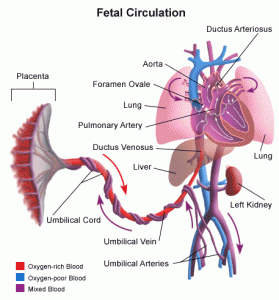Welcome to the latest installment of the Attachment Parenting International Principles of Parenting blog carnival. This month’s carnival will cover API’s 4th and 5th Principles of Parenting – Use Nurturing Touch and Ensure Safe Sleep, Physically and Emotionally. If you’re interested in participating in a future carnival, please visit the API Blog Carnival Schedule for more details.
The Importance of Infant Massage
Guest Post for API Speaks by Barbara Nicholson
The mothers of India have given the world one of the most important parenting tools known to humanity: infant massage. It is probably hard to imagine raising a baby without this gentle, everyday experience, but in some western cultures (particularly the U.S.) it is just being discovered!
A Mother’s Kiss
Living Peacefully with Children
When we were expecting our first child, I bought the requisite newborn hats. Afterall, every new baby needed hats to keep their little head warm. When our son was born, instinct kicked in. As I brought him to my chest to snuggle him close, my head automatically dipped, taking in his new baby smell and kissing the top of his wet little head.
Our Nighttime Nurturing
Maman A Droit
For a while, Baby thought 2:30 AM was playtime. It’s our fault really. For one thing, Hubby often stayed up that late doing grad school homework last semester. It also then worked out that staying up until 3 AM meant Baby slept during the day while Daddy was gone, and played while Daddy was home to admire all his tricks.
Reconnection
Picklebums
We parent our children to sleep…. all of them, even the six year olds who don’t necessarily need us to. For all three kids it seems bed time is the time to catch up on closeness.
Where the Baby Sleeps
Living Peacefully with Children
“Good. That’s where babies should be – snuggled with their mamas. Babies need to stay with their mothers in order to stay warm and keep breathing, and so they remember to nurse throughout the night.” This was what had been passed down to her through generations of women.
Frequently Asked Questions About Sleeping With Your Baby
Baby Dust Diaries
I often get asked the same questions about our Family Bed. Aellyn has slept between my husband and I since the day she came home (she also slept in bed with me at the Birth Center – something some hospitals will not allow).
Sleeping Safe and (Psychologically) Sound
Connected Mom
Bedsharing is an ancient concept. Still practiced all over the world, bed sharing has become a subject of controversy in the United States. Often the debate centers around the safety issues regarding bed sharing.
Take Your Kids’ Kisses
mamaTRUE
I recently discovered the Secret Society of Happy People. While I don’t think I have figured out how to walk through life with the requisite joy to become a member, I’m using them as an example in my quest to learn how to be happy.
Ensuring safe sleep – meeting the needs of parents and child
Little Snowflakes
When Dylan was 6 weeks old, I enrolled us in a mom and baby class at a local parenting center. I figured it would be a good way to meet other moms and to force myself to get dressed and out of the house.
Infant Massage: An encounter of love that goes beyond the borders of the body
Guest Post for API Speaks courtesy of Infant Massage USA
A touch, a look, a gesture… are encounters of love where the magic of innocence and candor unite. Mothers, fathers and babies are immersed in an atmosphere of tenderness and simplicity, in which voices, whispers, songs, looks and movements are party to a loving and eternal relationship.
API June Blog Carnival
Journey to the Simple Life
My journey towards co-sleeping began years ago, I think it was a 20/20 special about it. I thought it was odd at the time, boy, how my mind has been changed!




 questions and more become so much clearer once you know the basic carrier types. There are six basic types of carriers. They are woven wraps, stretchy wraps, ring slings, pouches, mei tais and buckle carriers.
questions and more become so much clearer once you know the basic carrier types. There are six basic types of carriers. They are woven wraps, stretchy wraps, ring slings, pouches, mei tais and buckle carriers.